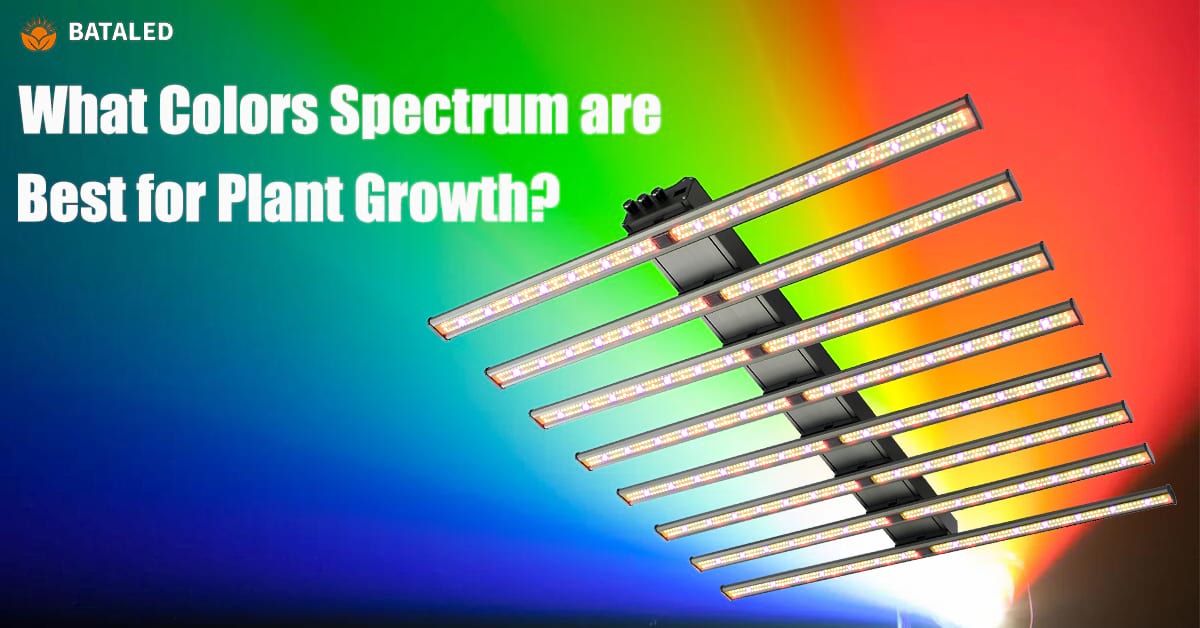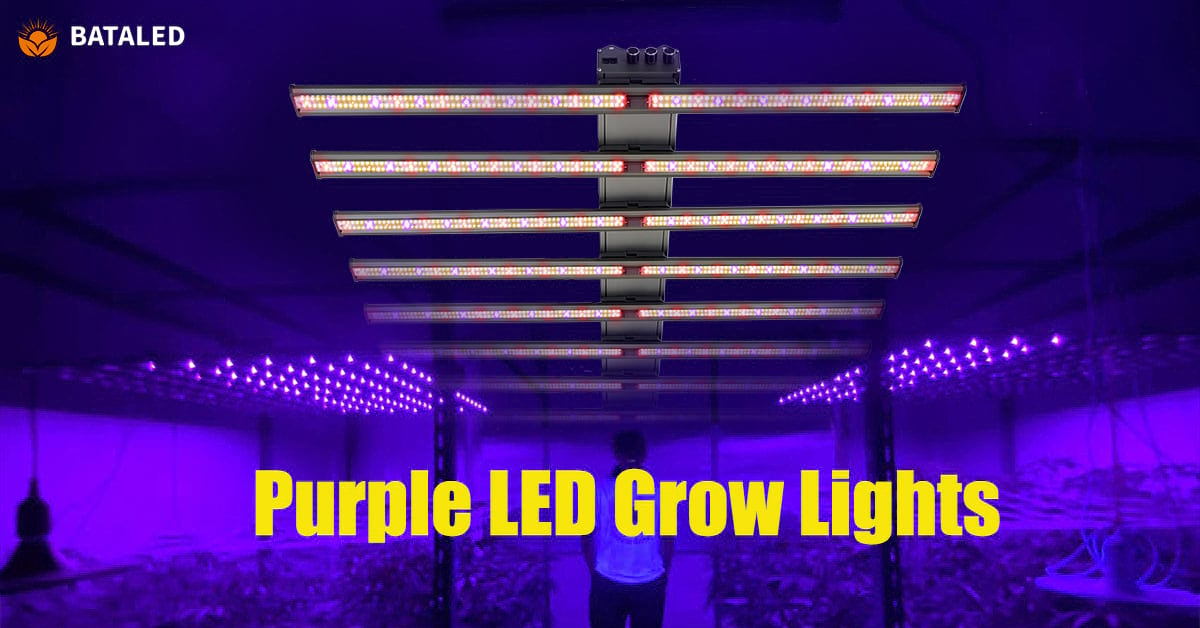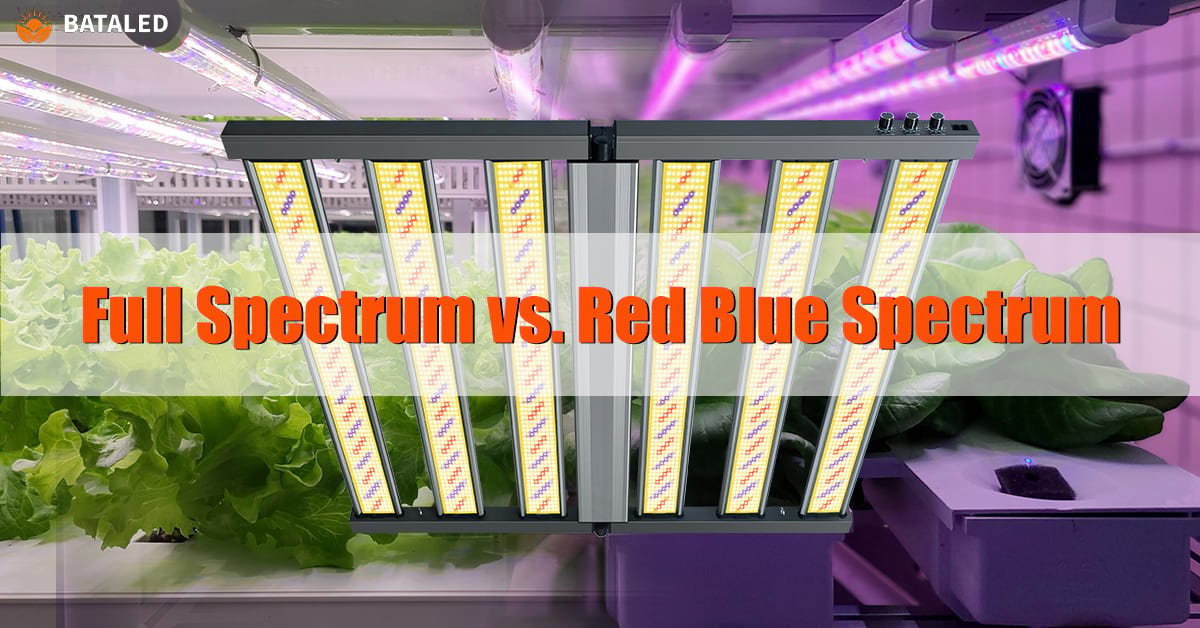Don’t Get Scammed! 8 Pro Tips to Buy the Best LED Grow Lights from Certified Supplier (Save Money & Boost Your Harvest)
Have you ever faced this frustrating situation: “Why is your lettuce growing limp? Why do your electricity bills keep climbing? Why are your harvests shrinking?” The shocking truth? Your grow lights might be to blame!
The grow light market is flooded with misleading claims—inflated wattage ratings, counterfeit LED chips, and sketchy suppliers. Many beginners, lacking experience and basic product knowledge, fall victim to flashy marketing gimmicks. Imagine buying a “budget” grow light only to discover its actual performance is 40% weaker than advertised. The lights dim within six months, your plants struggle, and your electricity costs double.
So how do you avoid these traps? This guide reveals 8 practical tips to help you choose reliable grow lights—saving money, cutting energy waste, and boosting your harvests!
Table of Contents
- Tip 1. Check the Manufacturer’s Experience — Factories Under 5 Years Are Risky
- 1.Government Platforms & Databases
- 2.International Business Tools
- 3.Supplementary Sources
- Tip 2. Verify Factory/Supplier Size — Small Workshops Love to Exaggerate
- 1.Third-Party Verification: Hire a Professional Inspector
- 2.On-Site Visits: See It Yourself
- 3.Customs or Tax Records: Follow the Paper Trail
- Tip 3. LED Chip Brands — Spot Fake “Samsung” & “Osram”
- 1.Inspect the LED Chip’s Exterior
- 2.Examine the Internal Structure
- 3.Check Packaging Labels
- 4.Run Performance Tests
- Tip 4. LED Drivers — Off-Brand Drivers = Ticking Time Bombs
- 1.LED Driver Brands
- 2.Isolated vs. Non-Isolated Drivers
- Tip 5. Design & Manufacturing — The Devil’s in the Details
- 1.Structural Design: Heat Dissipation = Lifespan
- 2.Optical Design: Layout Affects Light Quality
- 3.Weatherproofing: No Fake IP Ratings
- 4.Production Standards: Factories vs. Garages
- Tip 6. Inspect Equipment — Quality Tools Don’t Lie
- Tip 7. Test the Sales Team — Real Pros Solve Problems, Not Just Sell
- Step 1: Initial Response
- Step 2: Needs Analysis
- Step 3: After-Sales Promises
- Step 4: Technical Support
- Tip 8. Verify Case Studies — Real Projects Don’t Lie
- Method 1: Scrutinize Details, Not Just Glossy Renders
- Method 2: Demand Proof, Not Promises
- Conclusion — 8 Rules to Avoid Grow Light Scams
Tip 1. Check the Manufacturer’s Experience — Factories Under 5 Years Are Risky
In today’s global economy, suppliers are scattered worldwide, and their quality varies wildly. The reliability of your grow lights—and ultimately your profits—depends on choosing high-quality manufacturers. That’s why you must verify a plant light supplier’s years of specialized manufacturing experience and business history to gauge their expertise.
Based on LED grow light industry insights, prioritize factories with 5+ years of operation (stable technology, reliable after-sales support). Below are three practical methods to research a company’s background:
1.Government Platforms & Databases
(1) National Business Registries
Check official government databases in the supplier’s country to verify registration and operational history:
- China: Use the National Enterprise Credit Information Publicity System (http://www.gsxt.gov.cn) to search for company details by full name.
- USA: Search the SEC website for public companies or state-level business registries (e.g., California Business Portal).
- UK: Access “Companies House”from uk government for free company registration numbers, shareholder details, and financial reports.
- EU: Use platforms like Germany’s Unternehmensregister or France’s INPI for corporate records.
(2) Customs Data
- China: Verify export qualifications and trade history via the General Administration of Customs (http://www.customs.gov.cn).
- Global: Use platforms like Panjiva to review a supplier’s import/export records and trade partnerships.
2.International Business Tools
Credit Rating Platforms
- Dun & Bradstreet: A global leader in business credit checks, financial analysis, and supply chain insights (widely trusted in Western markets).
- Tianyancha/Qichacha International: Primarily covers Chinese firms but includes limited international company data.
3.Supplementary Sources
(1) Industry Directories & Associations
- Search chamber of commerce websites (e.g., U.S. Chamber of Commerce, German Chamber of Industry and Commerce) or industry directories like Yellow Pages.
- Attend trade shows (e.g., Canton Fair) to collect supplier certifications firsthand.
(2) Social Media & Public Records
- LinkedIn Company Pages: Check operational history, team structure, client reviews, and case studies.
- Google Search: Use queries like “[Company Name] + reviews” or “[Company Name] + company” to filter results.
- Social Media: Investigate Facebook, Instagram, Twitter/X and YouTube for authenticity clues.
Tip 2. Verify Factory/Supplier Size — Small Workshops Love to Exaggerate
After confirming a factory/supplier’s qualifications and sufficient operational history, verify their actual size. Industry reports reveal that 60% of small factories falsify their facility size and workforce numbers. To ensure product quality, scrutinize their scale to confirm they meet professional manufacturing standards.
Here are 3 proven methods to evaluate a supplier’s true capabilities:
1.Third-Party Verification: Hire a Professional Inspector
Use agencies like SGS or Bureau Veritas (BV) to conduct on-site audits.
They’ll verify:
- Production equipment
- Quality management systems
- Business license authenticity
2.On-Site Visits: See It Yourself
(1)Direct inspection is the most reliable way to assess:
- Factory size and workforce
- Production/testing equipment
- Inventory and logistics capacity
(2)Can’t visit in person? Request a live video factory tour to check production lines, warehouse stock, and machinery in real time.
3.Customs or Tax Records: Follow the Paper Trail
(1)Export data: Use platforms like customs data portals to verify export volumes and trade activity.
(2)Tax records: In countries like the U.S. or South Korea, check tax authority websites to assess a supplier’s financial credibility and scale.
Tip 3. LED Chip Brands — Spot Fake “Samsung” & “Osram”
Some suppliers use counterfeit “Samsung” or “Osram” LED chips to cut costs and boost profits. These knockoffs cost 1/3 of genuine chips but fail quickly and deliver poor light efficiency. To avoid being tricked:
You shouled demand the LED grow light suppliers offer official brand authorization certificates (e.g., Samsung/Osram).
Use these 4 verification methods (using Samsung LM301B as an example):
1.Inspect the LED Chip’s Exterior
Check size, shape, and markings (as shown in the diagram 1):
Diagram 1:
a. Single 38mil×38mil flip-chip per LED (as shown in the diagram 2: Marked with a red frame).
Diagram 2:
b. Small black dot on the front (as shown in the diagram 3: Zener diode, circled in red).
Diagram 3:
c. Patented butterfly-shaped bracket on the back (as shown in the diagram 4: Marked with a yellow frame).
Diagram 4:
d. Samsung-specific serial number on the back (as shown in the diagram 5: Marked with a green frame).
Diagram 5:
e. Square-shaped design.
2.Examine the Internal Structure
If unsure, disassemble the chip and inspect under a magnifier/microscope:
Genuine Samsung LM301B chips have a textured surface with seven + one circular dots (as shown in the diagram 6).
Diagram 6:
3.Check Packaging Labels
Match the label details to Samsung’s official specifications. Focus on the six-letter code marked by a red arrow on the top-right corner (as shown in the diagram 7). Missing or mismatched codes = counterfeit.
Diagram 7:
4.Run Performance Tests
For experts with proper equipment:
Use an integrating sphere to measure output against Samsung’s published specs.
Tip 4. LED Drivers — Off-Brand Drivers = Ticking Time Bombs
1.LED Driver Brands
LED grow lights operate in unique environments requiring moisture resistance, compatibility, stability (constant current output + EMI resistance), and high energy conversion efficiency. Not all drivers meet these demands.
Trusted brands like MEAN WELL, Inventronics, and Fahold specialize in grow light drivers with proven performance.
Off-brand LED drivers, however, often cut corners:
- 30-40% lower efficiency → wasted energy
- Safety risks from poor surge protection or overheating
- Reduced yields due to unstable light output
2.Isolated vs. Non-Isolated Drivers
Each type impacts your grow light’s power efficiency, dimming capability, cost, and safety. A professional supplier will recommend the right driver based on your setup—never assume cheaper = better.
| Feature | Isolated Drivers | Non-Isolated Drivers |
| Safety | Pros: • Electrical isolation (<0.25mA leakage) • No shock risk • UL/IEC certified |
Cons: • Shared input/output ground → shock risk • Requires external insulation → higher cost |
| Cons: • The circuit is relatively complex |
Pros: • Simple structure |
|
| Efficiency & Cost | Cons: • 85-90% efficiency • 30-50% pricier |
Pros: • 90-95% efficiency • 20-40% cheaper |
| Size/Weight | Cons: • Bulky (transformer-based) • Heavy |
Pros: • Ultra-slim (no transformer) • 1/3 the weight of isolated drivers |
| Noise Resistance | Pros: • Industrial-grade surge/EMI protection |
Cons: • Vulnerable to grid noise • Needs extra filters |
| Best For | Pros: • Humid environments (greenhouses) • High-voltage/multi-channel setups |
Pros: • Dry, enclosed spaces (grow tents) • Budget home systems |
Tip 5. Design & Manufacturing — The Devil’s in the Details
Your grow light’s performance and lifespan depend entirely on design and production quality. From structural engineering to waterproofing standards, every detail matters.
1.Structural Design: Heat Dissipation = Lifespan
Poorly designed lights lose 30%+ brightness within a year due to overheating.
How to verify:
- Check cooling fins: Look for fin-type aluminum heat sinks (≥2mm thick).
- Test surface temps: After 1 hour of use, the light’s surface should stay ≤50°C (122°F). Anything above 60°C (140°F) fails.
- Demand thermal reports: Suppliers must provide thermal resistance data (lower values = better cooling).
2.Optical Design: Layout Affects Light Quality
Cheap lights use lazy LED arrangements, causing:
- Patchy growth (edge PPFD drops sharply)
- Mismatched spectra
- 20-30% lower efficiency
How to verify:
- Review spectral & PPFD maps from the manufacturer.
- Measure PPFD variations with a PAR meter: fluctuations <20% = good uniformity.
3.Weatherproofing: No Fake IP Ratings
Many budget lights falsely advertise IP65+/waterproof claims. For greenhouses or humid setups:
- Avoid anything below IP65
- Conduct a water spray test or request certification.
4.Production Standards: Factories vs. Garages
| Established Factories | Small Workshops | |
| Production Line | SMT machines + automated assembly | Hand-soldered, low yield |
| Quality Checks | 100% inspection (spectrum + stress tests) | Random sampling (or none) |
| Documentation | Full BOM lists + production guidelines | No standardized processes |
Tip 6. Inspect Equipment — Quality Tools Don’t Lie
Never trust sales pitches alone — a grow light manufacturer’s true capability lies in their production and testing equipment. Low-end tools can’t build high-quality grow lights.
Two Must-Check Equipment Types During Factory Visits
- Production Equipment: Precision machinery that boosts efficiency and slashes defect rates.
- Testing Equipment: Professional-grade R&D tools ensuring performance and durability.
How to Verify:
- Demand a live video demonstration of their production/testing processes.
- Hire third-party inspectors (like SGS) for on-site audits, or conduct a field visit in person.
Spotting Top-Tier Equipment:
- Check brands: Spectrum analyzers: Ocean Insight, Everfine.
- Verify precision: Compare test reports — pro tools measure down to 0.1μmol accuracy.
Here I would like to recommend BATA LED, a China-based professional LED grow light manufacturer with over a decade of manufacturing expertise. As one of China’s leading wholesale suppliers specializing in adjustable full spectrum LED grow lights, we’re equipped with advanced production machinery, including integrating sphere tester, LED chip assembly pick-and-place machine, coating machine, CNC aluminum cutting and carving machine, and hardware stamping presses.
The full-spectrum lighting solutions are scientifically designed for optimal indoor plant growth, offering wholesale buyers reliable technical specifications and durable construction tailored for commercial cultivation needs.
Tip 7. Test the Sales Team — Real Pros Solve Problems, Not Just Sell
Don’t let smooth talk fool you — truly professional teams will survive your toughest questions and build solutions around YOUR needs. Use this 4-step test:
Step 1: Initial Response
- Pass: Provides customized recommendations fast (spectral charts, installation guides included).
- Red Flag: Sends generic catalogs and dodges technical questions.
Step 2: Needs Analysis
- Pass: Asks about crop type, growth stage, and grow space dimensions.
- Red Flag: Pushes “hot sellers” claiming they work for “all plants”.
Step 3: After-Sales Promises
- Pass: Defines exact warranty coverage and emergency fixes.
- Red Flag: Makes verbal guarantees with no written backup.
Step 4: Technical Support
- Pass: Assigns a dedicated team to optimize light settings for your crops.
- Red Flag: Ghosts you when issues arise.
Tip 8. Verify Case Studies — Real Projects Don’t Lie
When suppliers flaunt “international client projects,” don’t get swept away by the hype. Dig into hard evidence to confirm their customization skills.
Method 1: Scrutinize Details, Not Just Glossy Renders
Request:
- On-site videos/photos of installations and crop environments.
- Exact grow light models and quantities used in the project.
- Crop health documentation (growth stages, leaf color, yield consistency).
Method 2: Demand Proof, Not Promises
Verify:
- PPFD maps and spectrum configurations from their reports.
- Harvest yields and profit metrics are tied to the lighting setup.
- Lighting specs (models/quantities) and grow space size.
Conclusion — 8 Rules to Avoid Grow Light Scams
Your grow lights are the lifeline of indoor farming — don’t let cheap knockoffs sabotage your harvest.
Spend just 10 minutes following these steps to vet suppliers – avoid exaggerated specs, counterfeit products, and knockoff traps while saving costly mistakes and boosting yields.
Growing demands diligence; choosing lights demands wisdom. Bookmark this guide and master these 8 rules:
1.Vet credentials: Factories with 5+ years’ experience beat startups.
2.Verify scale: On-site checks expose garage operations.
3.Test LEDs: Spot fake Samsung/Osram chips in a few minutes.
4.Choose drivers: Match power supplies to your environment.
5.Reject junk: Toss lights with poor cooling or sloppy optics.
6.Audit tools: Low-end machines = low-quality products.
7.Test sales teams: Pros answer nitty-gritty questions.
8.Reference case: Case study data> sales fairy tales.
CATEGORIES
Recommended Post

Where It’s Legal to Grow Cannabis: Ultimate Tips & Cultivation Laws
About Author—Jose Li
Jose, a senior content creator at BATA LED, brings over 5 years of expertise in LED grow light. He delivers valuable insights to help growers and farmers better understand LED grow light technology, empowering them to boost crop yields and quality with advanced lighting solutions.


